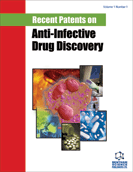Abstract
Background: Maxillofacial and head & neck infections often jeopardize patients’ lives. Regional intracranial spread to the cavernous sinus, but also to the mediastinum is common for those left untreated. The divergence of the upper peptic and respiratory tracts from the pharynx, the presence of the brain vasculature, the fine sensory instruments for vision, hearing and taste-smell, and the unique feature of mucosa directly attached to facial bones in the paranasal sinuses, oral cavity and external auditory meatus make this region the most exposed to infections in the human body. Special immune mechanisms have evolved in this area, however infections are still very common.
Methods & Results: We review the unique pathophysiological features of maxillofacial and head & neck infections. We describe novel investigational anti-infective agents, and analyze their potential clinical utility with regard to mechanisms of action and site preference.
Discussion: We emphasize on the need for more antimicrobial drug research and discuss on the current skews in pharmaceutical research and manufacturing practices that make new categories of antimicrobial drugs an exceptional entity. Drug patents may need to be expanded both longitudinally in terms of time period but also squarely, potentially including the drug class in the patent rather than the drug itself. Clinicians need to be aware of these limitations and prescribe antibiotics to their patients with parsimony.
Keywords: Head & neck, infection, patent, maxillofacial, oral, paranasal sinuses, treatment
 13
13





















